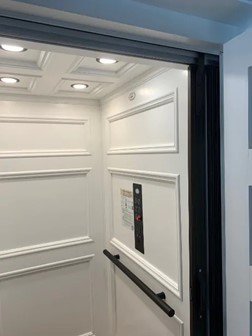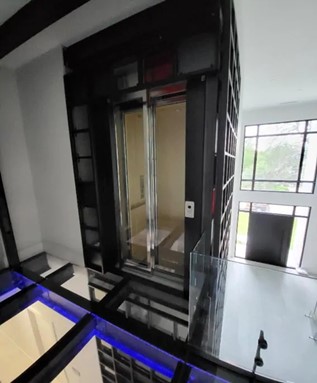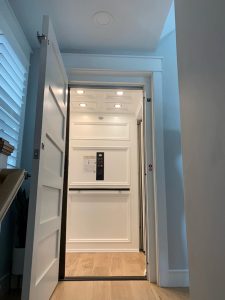
Elevators are a vital component of modern buildings, providing convenience and accessibility for people in residential, commercial, and industrial spaces. However, like any mechanical system, elevators require regular upkeep and periodic modernization to ensure they operate safely and efficiently. Not promptly addressing elevator maintenance can lead to a range of issues, from inconvenient breakdowns to safety hazards. The following article highlights the importance of elevator repair and renovation, and why building owners and property managers should prioritize these services.
Ensuring Safety and Compliance
The primary reason for regular elevator repair and refurbishment is safety. Elevators are complex machines with many moving parts, and over time, these components can wear out or become damaged. If not properly maintained, an elevator can become a safety risk, potentially leading to accidents or injuries.
In addition to the risk of mechanical failure, outdated elevators may not meet current safety codes and regulations. Building codes and safety standards are continually updated to reflect new technologies and best practices. Modernizing an elevator ensures that it complies with the latest safety requirements, reducing liability for building owners and protecting occupants.
Regular inspections, maintenance, and timely repairs can prevent small issues from becoming major problems. By addressing wear and tear, faulty wiring, and other potential hazards early on, you can ensure that the elevator operates safely and reliably for years to come.
Improving Energy Efficiency and Reducing Costs
Modern elevators are designed to be more energy-efficient than older models. By upgrading outdated systems with newer technology, building owners can significantly reduce energy consumption and lower operating costs. For example, modern lift systems often use regenerative drives that can convert excess energy into usable electricity, reducing overall energy consumption.
In addition to energy savings, modernizing an elevator can lead to reduced maintenance costs. Older elevators often require more frequent repairs and can be more expensive to maintain due to the scarcity of replacement parts. By upgrading to newer systems, building owners can reduce the frequency and cost of repairs, leading to long-term savings.
Elevator upgrades also allow for the implementation of smart technologies, such as predictive maintenance systems. These systems use sensors and data analytics to monitor the condition of the elevator in real-time, allowing for proactive maintenance and reducing the likelihood of unexpected breakdowns.
Enhancing User Experience and Accessibility
Elevator modernization can significantly enhance the user experience, making them more comfortable, efficient, and accessible. For example, lift systems are often equipped with smoother and quieter operation, which can improve the overall experience for passengers. Upgraded controls can reduce wait times and improve the efficiency of the elevator’s operation, particularly in high-traffic buildings.
Accessibility is another crucial consideration. Older elevators may not be fully compliant with the Americans with Disabilities Act (ADA) or other accessibility standards. Upgrading an elevator can ensure that it meets these requirements, making the building more accessible to all occupants, including those with disabilities. Features such as braille buttons, audible announcements, and improved lighting can make the system easier to use for people with a wide range of needs.

Extending the Lifespan
Like any mechanical system, elevators have a finite lifespan. However, with proper maintenance, you can extend the life of the elevator, delaying the need for a complete replacement. Maing improvements to the lift allows you to upgrade key components, such as the control system, motors, and safety features, without having to replace the entire system.
By investing in necessary updates, building owners can preserve the value of their property and avoid the significant expense of a full replacement. Regular upkeep and repair also ensure that the lift continues to operate reliably, minimizing downtime and inconvenience for occupants.
Staying Competitive
Today, building owners and property managers must continually invest in their properties to attract and retain tenants. Elevators are often one of the first things people notice when entering a building, and a modern, well-maintained elevator can make a positive impression on potential tenants or buyers.
On the other hand, a rundown or malfunctioning elevator can be a major turn-off, leading to negative perceptions of the building, its safety, and its management. By prioritizing maintenance, building owners can enhance the overall appeal of their property and maintain its value in the market.
Conclusion
Elevator upkeep is essential for ensuring the safety, efficiency, and longevity of elevators in residential, commercial, and industrial buildings. By investing in regular maintenance and timely upgrades, building owners can reduce the risk of accidents, lower operating costs, enhance the user experience, and extend the life of their elevators.
In addition to these practical benefits, revamping elevators can also improve the overall appeal and competitiveness of a property in the real estate market. Whether you’re a building owner, property manager, or developer, prioritizing elevator repair and modernization is a smart investment that pays off in the long run.
If your elevator is outdated or in need of repair, don’t wait until it becomes a safety risk. Contact a trusted elevator service provider to schedule an inspection and explore updated options that can keep your elevator running smoothly and safely for years to come.



